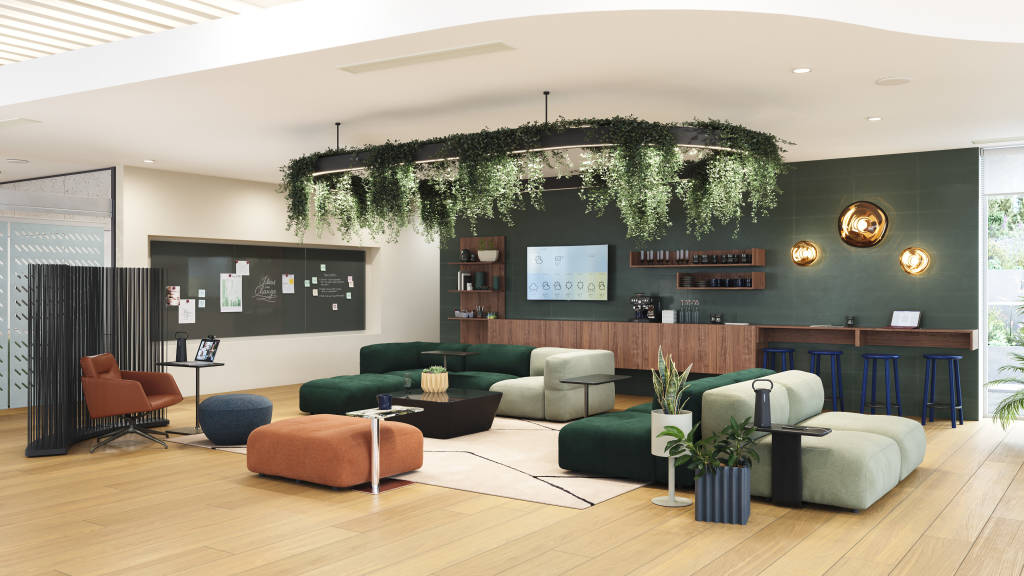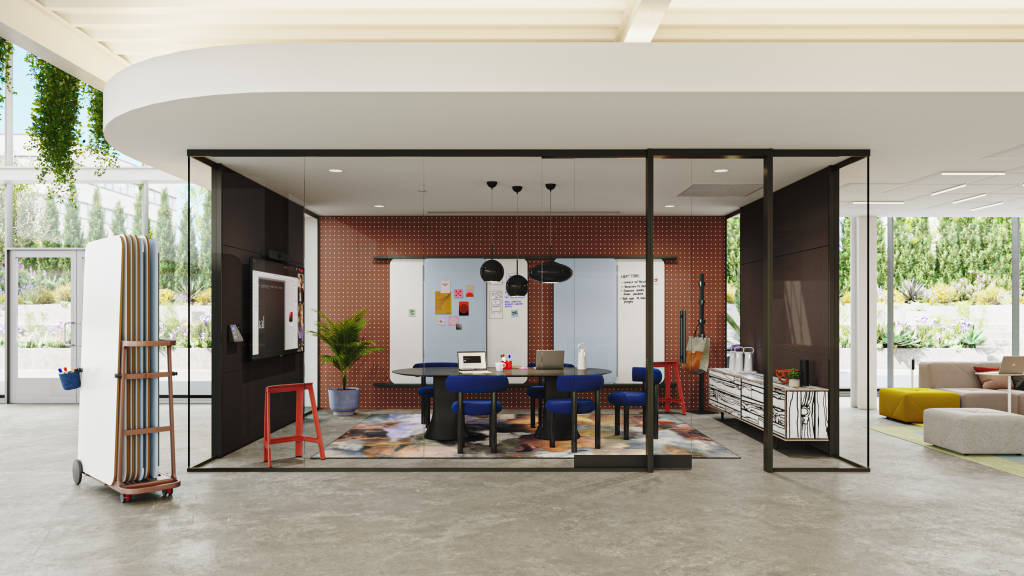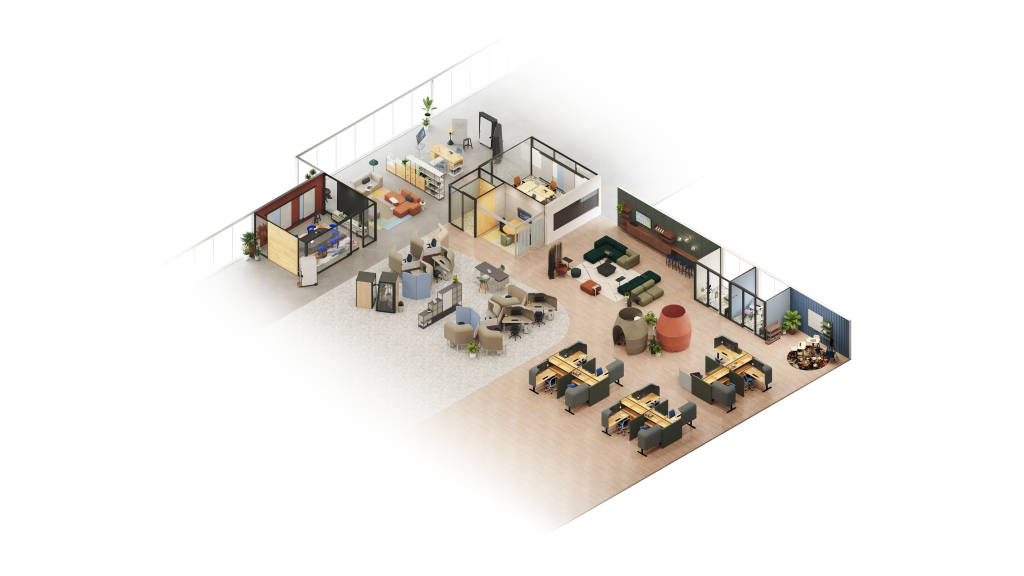Hybrid Neighborhoods
If you’ve looked at updating your space in the last few years the words like huddle rooms, collaboration, and touchdown spaces shouldn’t be a surprise. There has been a push for flexible working spaces and teamworking spaces that can be shifted and changed to support anyone who uses the space.
A neighborhood approach to these spaces isn’t new, but it has been redefined to support remote work and constantly shifting technologies. A team that sits together already promotes collaboration and if they have a dedicated meeting zone close by that suits their needs without having to retrofit an existing room, they are set up to succeed.
So, what is a Hybrid Neighborhood?
A Hybrid Neighborhood is a way to look at an overall workflow and organization of the staff, so they have what they need right at their fingertips. It’s a concept that analyzes the needs of the team and designs areas that best suit them.
They include:
• Individual spaces assigned to one person or shared amongst the team
• Collaboration spaces for in-person and virtual interactions that support the different ways people need to come together
• Places with appropriate privacy for individual heads down work or finding solitude and rejuvenation
• Areas to gather, socialize and learn with teammates
How do you implement a hybrid neighborhood in your space?
It starts with looking at the floorplan in a holistic way and surveying the team leaders. Some of the following questions are the ones we often use when starting the conversation around changing space.
• Is there a team that comes and goes that would be better suited towards the entrance of the building so they wouldn’t disrupt others?
• Do employees often talk about how there’s a lack of meeting rooms, or that the size doesn’t suit the size meetings they have?
• Do they find a disconnect between remote workers and the team that’s in the office?
• Is there a push to work from home to that they can focus and have heads down work?
• If your space has current collaboration areas, does it suit the way your employees are working now?
• Are there areas that would benefit from whiteboard spaces and flexible seating for breakout groups?
• Does your team need filing storage and large workspaces or is there open space that could be used for a better purpose?
Author: Natalie Szewczyk
Interior Designer





